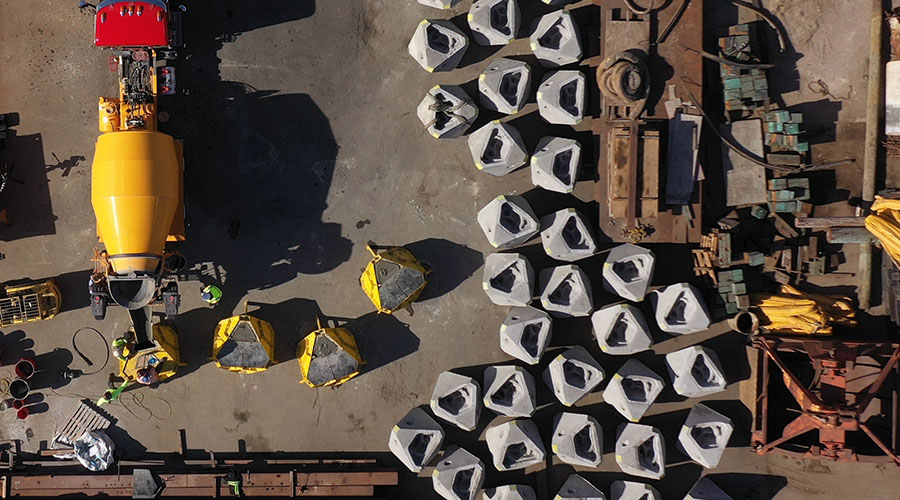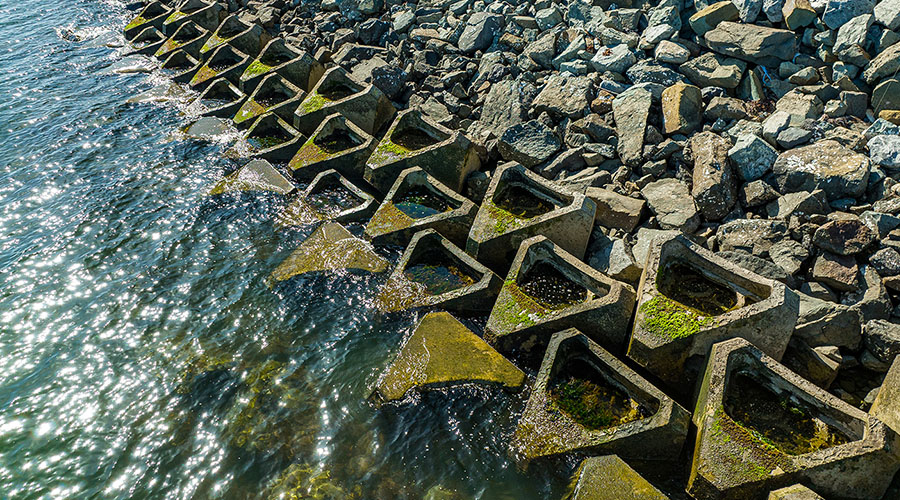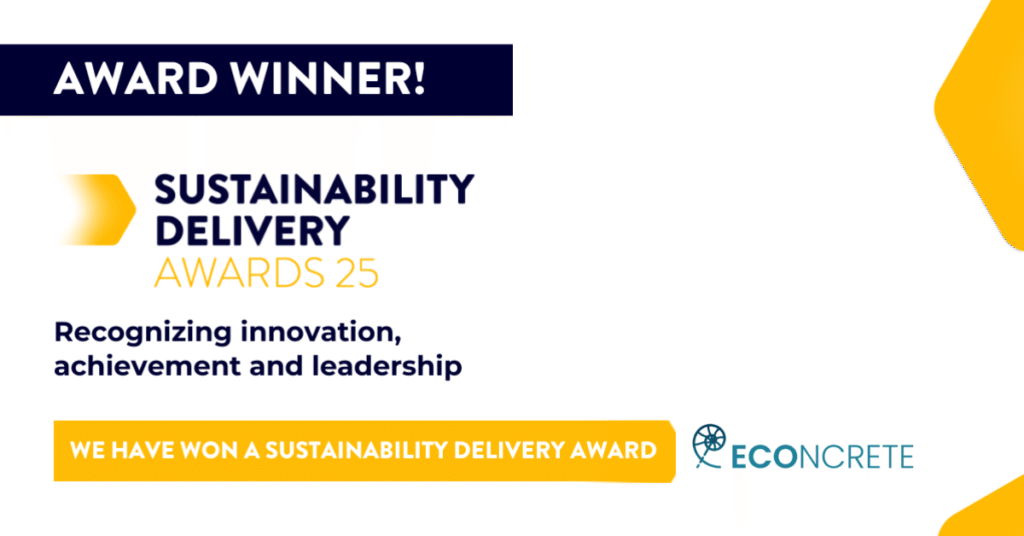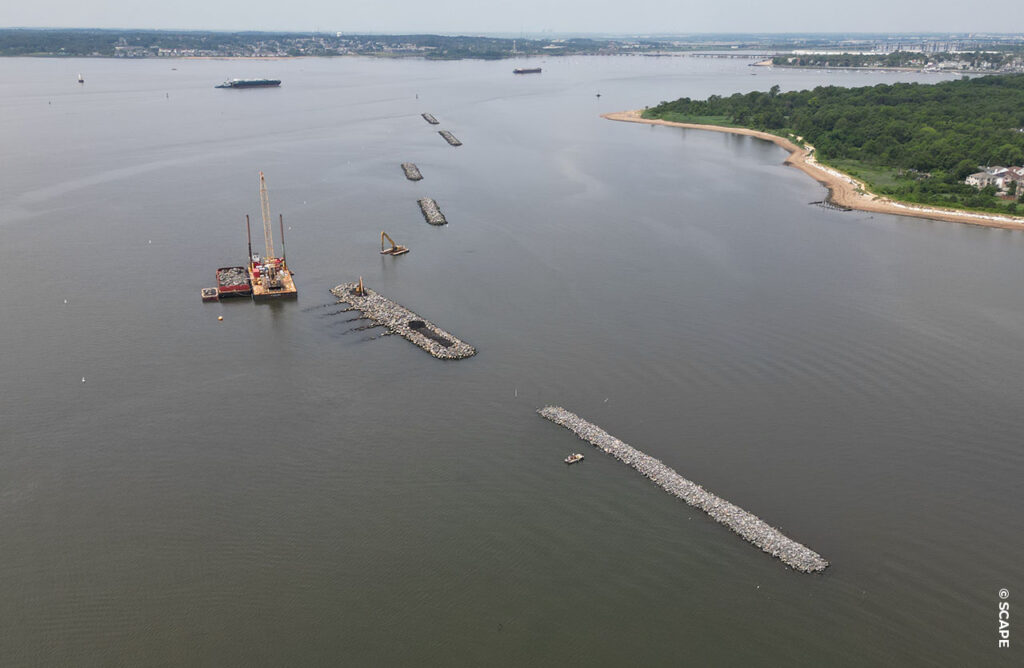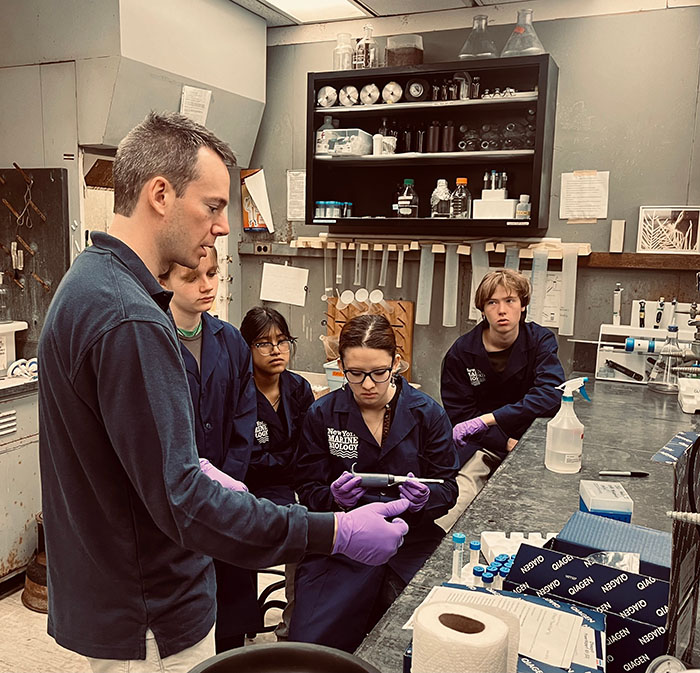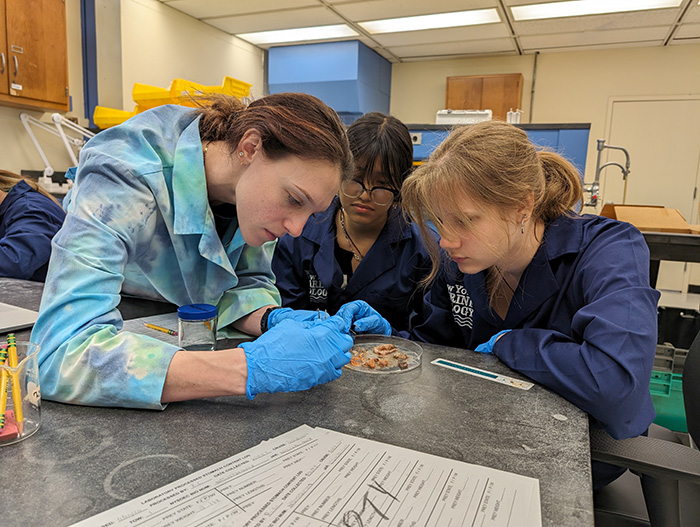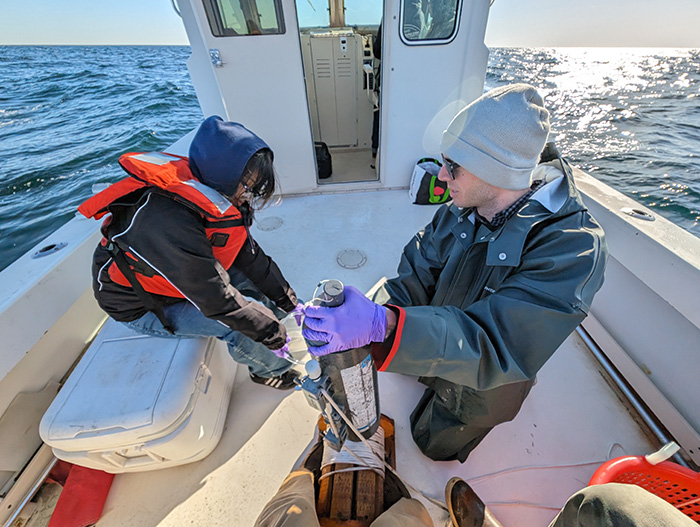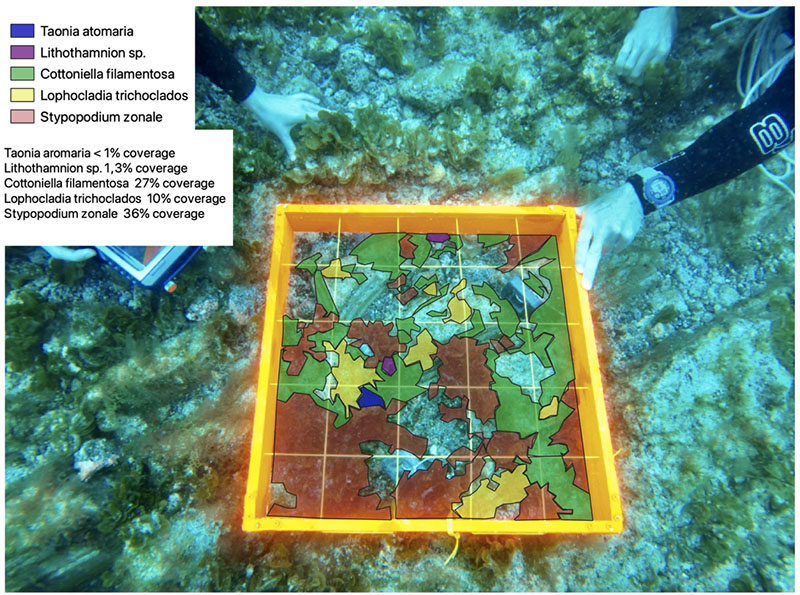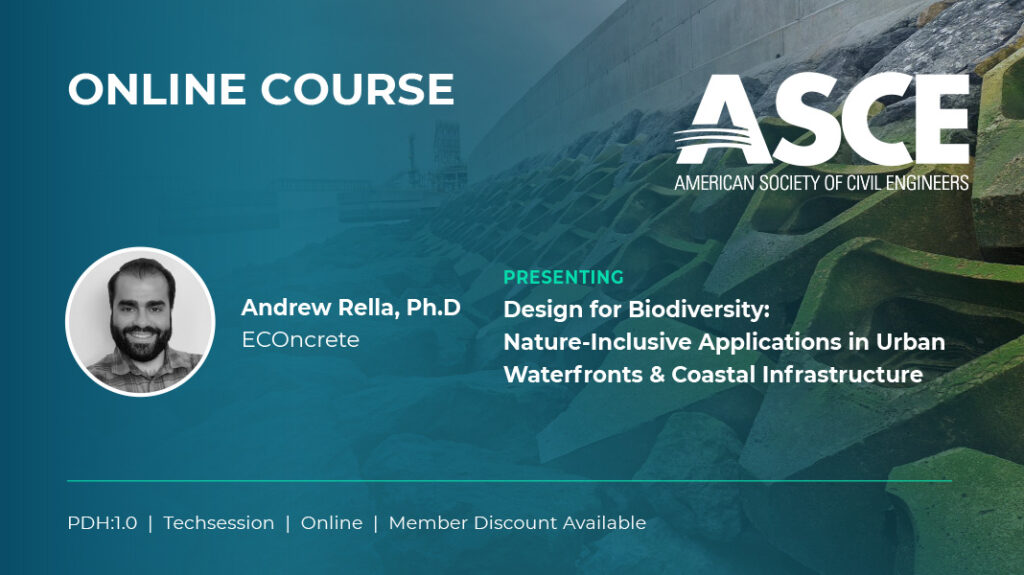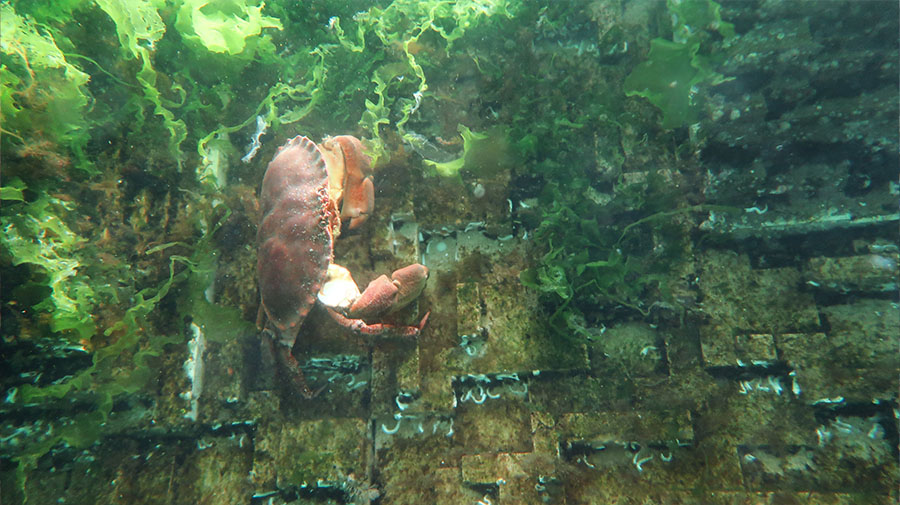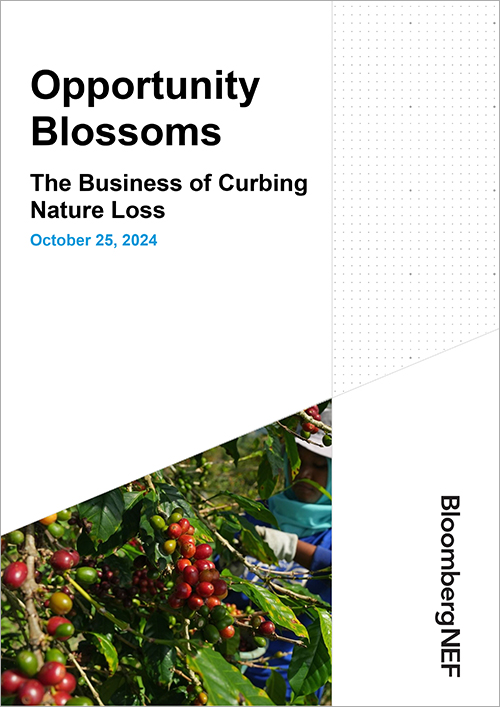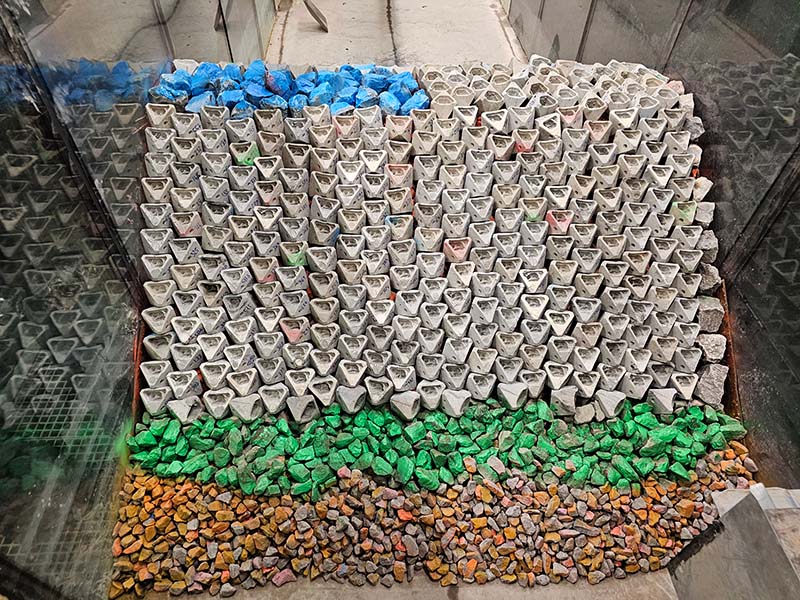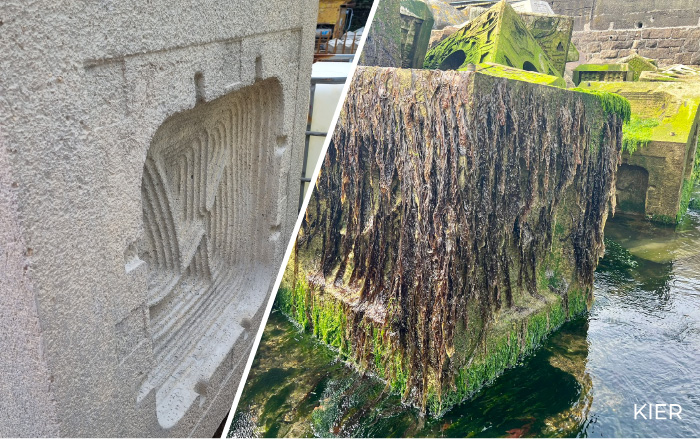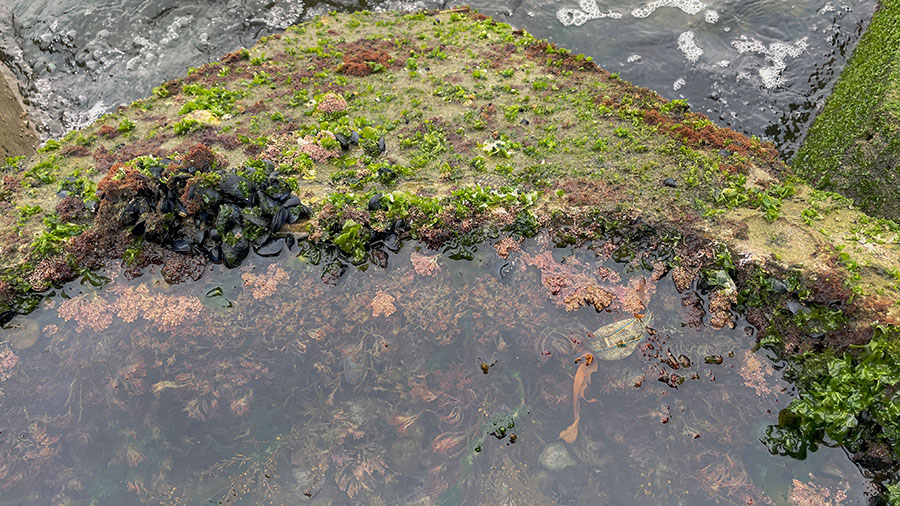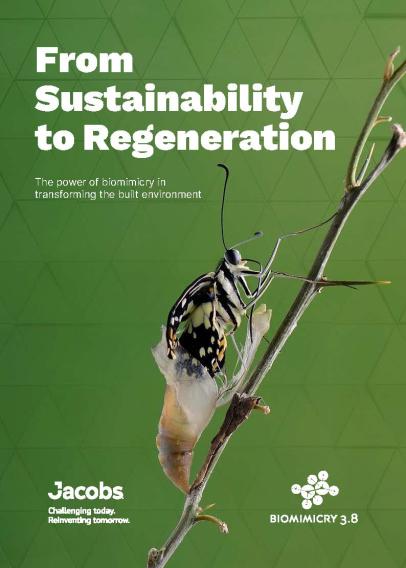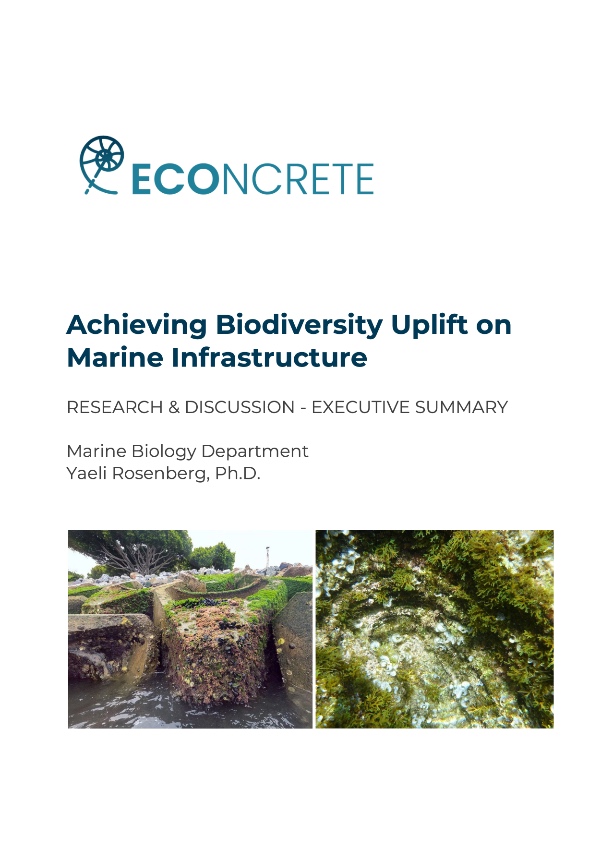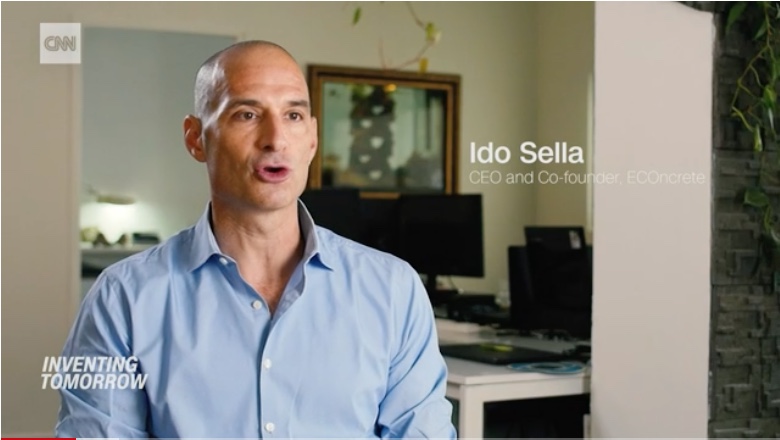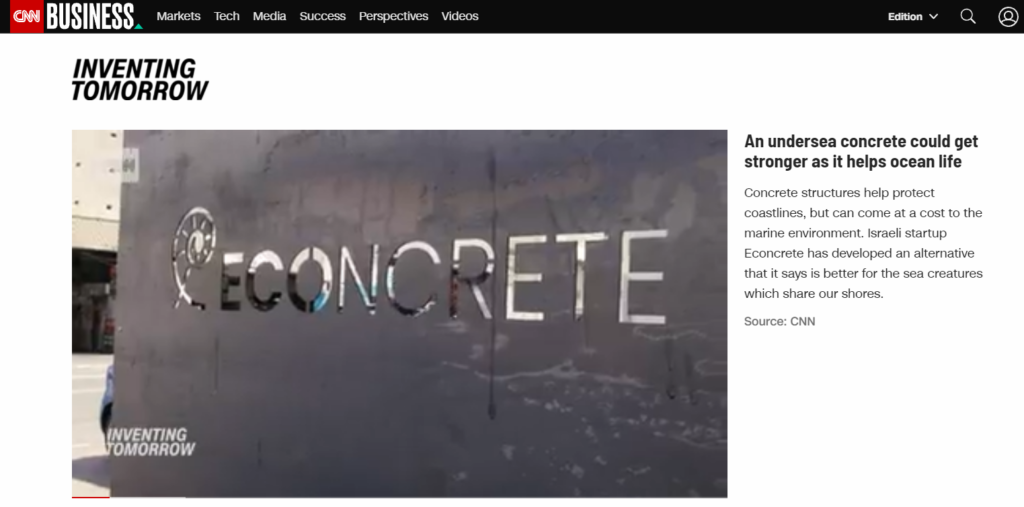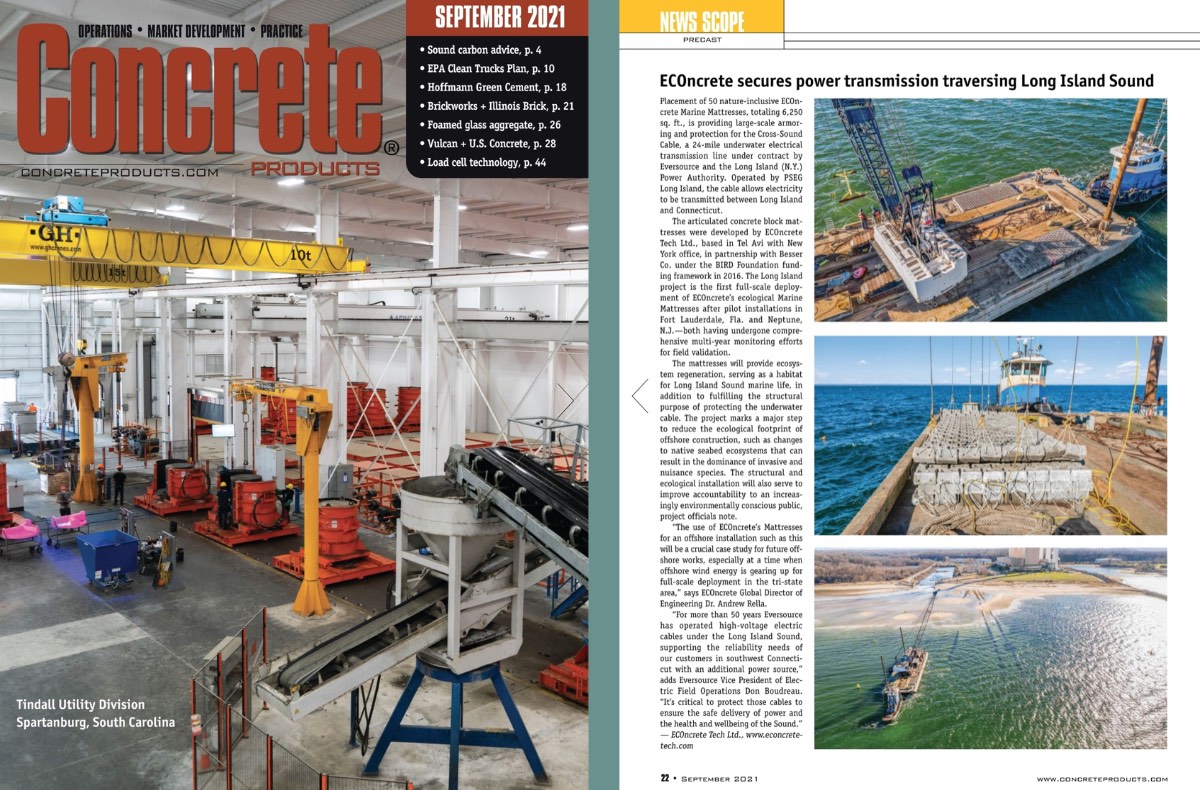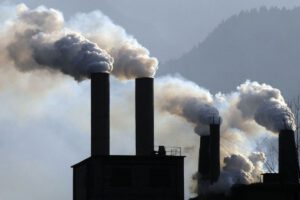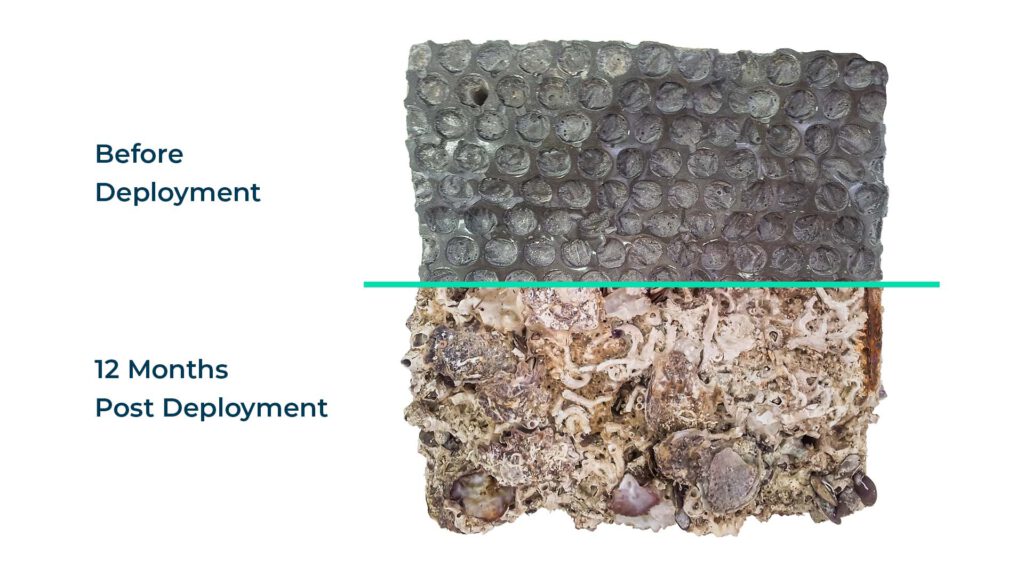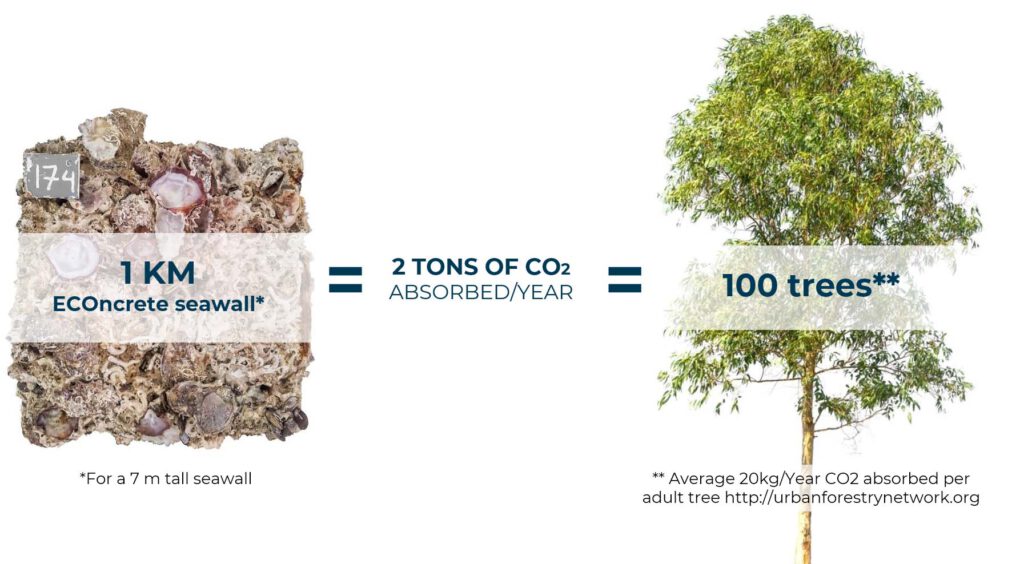Is there a person in the world that doesn’t like to sit on the beach, take a short break from the daily grind, and enjoy the beautiful ocean scenery?
Unfortunately, due to climate change, global sea levels are rising and our coastal cities are at risk. The most common response today is paving our shorelines with hard armor, especially, seawalls.
More and more seawalls are being built along coastlines all around the world, creating a barrier of protection from sea-level rise and extreme storminess. These are physical walls, made primarily of concrete or rock, that serve as barriers between the sea and people living on the coast. Most seawalls go unnoticed, these grey dull surfaces integrate with the urban landscape, as can be seen in the images from Vancouver, Canada, and even Hawaii, where you’d expect beautiful sandy beaches.

Vancouver’s Sea Wall. Credit: Clayton Perry Flickr
Seawalls – Our Front Lines of Defense
The rich history of seawall construction can be traced back thousands of years to the Eastern Roman Empire. The first seawalls are commonly attributed to the Roman Emperor Constantine I, also known as Constantine the Great, who ordered their construction in 448 A.D. The original marine barricades were built as part of a larger defense system designed to safeguard the city of Constantinople (present day Istanbul, Turkey) from attackers by land or sea. They were erected along the mainland wall and bordered the city’s Propontis side (on the Sea of Marmara) as well as Khrysoun Keras (on the gulf of the Golden Horn).
The construction of seawalls has been traced back thousands of years ago to Eastern Roman Empire. Historic seawalls made from Roman/Natural cement like in Caesarea are still holding. These structures have been proven to be so effective and strong that they can withstand decades of wear and tear from the evolution of human societies and extreme weather events.* After so many years they develop rough features and imperfections that allow for marine life to sustain. However, in recent times, modern seawalls are designed and built with little or no environmental considerations. The construction of seawalls comes at a grave cost to natural coastlines, creating a direct loss of natural coastal habitats, replacing them with unproductive, featureless, man-made structures. Studies show that seawalls typically support lower biodiversity and habitat quality, than natural shorelines, negatively impacting the ecosystem. In addition, current engineering requirements typically call for a 30 or 50 life span for the structure, leading to frequent maintenance/retrofitting, that inhibit the development of diverse and stable marine communities. Standard “grey” seawalls thus provide their engineered function, serving as massive concrete barriers, protecting against upland erosion and surge flooding. But using principles of ecological engineering, they can do so much more! Read on to the end of the blog to learn how.
Source: The Washington Post
I Don’t Live Next to The Sea…So Why Should I Care?
Due to the speedy increase in climate change side effects, coastal cities are disappearing! Beaches all around the world are being erased from maps and soon we won’t be able to enjoy their beauty and serenity.
Along with beautiful nature, our marine ecosystem services are in danger. The goods that humans take advantage of from the sea are immense and very important for human existence. With the heating, acidification, and rise of our global seas, we might no longer have access to things that we live off of like fish and marine sustenance, crude oil, hydropower, and waterway transportation.
Although losing our precious natural world and our important marine resources to climate change will be devastating, one of the saddest effects will be the immediate danger that island communities will be put in. Islanders from places like the Bahamas, Mauritius, Andaman Islands, etc… will be considered climate change refugees due to the complete deletion of their homes due to sea-level rise. That means losing generations of culture, history, language, and lives!
This is why the construction of seawalls is so important. Without their strength and protection, people, animals, and nature globally are at risk.
Famous Seawalls around the World:
Functional seawalls
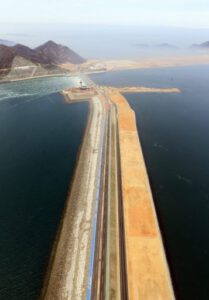
In 1991 South Korea began construction on what became one of the world’s longest seawalls, reaching 33 kilometers (21 miles) that connects to major industrial cities and protects the low-lying farmland and freshwater estuary river bed ecosystem of the region.
In Havana, Cuba, a seawall was constructed between 1901 – 1952 to protect the city from the massive waves that reach the island from the North. Although it only looks like a giant wall of concrete, the Malecon used to be a popular hangout spot for young Cubans and it’s renovation in now in planning stages.
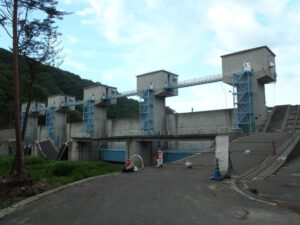
After a terrible tsunami in 2011, the Japanese beach city of Fudai adopted seawall implementation across all of their vulnerable ports and island alcoves. The city’s mayor, Mr. Wamura, saw the impact that small earthquakes and tsunamis had on the small fishing area and pushed the building of a 3.56-billion-yen seawall that would protect the city’s citizens. For years, the building was seen as unnecessary and a waste of tax payers money…until it stopped 66 feet waves and the local houses survived a massive tsunami unscathed.
Metamorphous – Canada – Functional with a side of aesthetics
Metamorphous, a seawall that’s also a piece of art: Paul Sangha Landscape Architecture
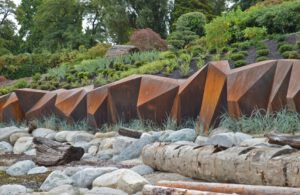
A New Chapter: Ecological Thinking in Seawalls
Still in Canada, the seawall of Vancouver’s convention center got upgraded to ecological habitat with a unique “habitat Skirt”. While not a structural element, this habitat addition created opportunities for mussels, algae and barnacles at the intertidal zone.

Courtesy of ECOncrete
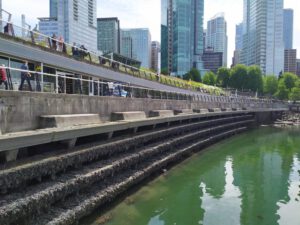
Are you planning on visiting Seattle soon? Next time you visit there, search for Seattle’s downtown waterfront. You should check out the new seawall project. Not only that this seawall was built to last more than 75 years, but it also was developed to create enhanced fish native habitat.
The structure, completed in 2017, was designed with few elements in mind:
Light penetration surfaces; habitat benches to provide hiding places for fish; and texture of the structure to promote growth of fauna.
Apart from replacing the old city’s seawall that needed reconstruction and retrofitting, the main ecological goal of Seattle’s new seawall was to boost the region’s iconic Chinook Salmon, listed under the US Endangered Species Act. The biological monitoring of the Seattle seawall has started a few months ago and is still in progress. Initial results indicate that the new seawall is easing the Salmons passage.
“The UW team saw an estimated 10,000 juvenile salmon of various species on a single day of surveying last May and as many as 300 chinook on another day the same month.” The Seattle Times
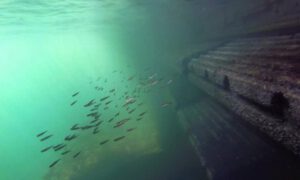
Juvenile chum salmon swim along the new Seattle seawall, designed with features to help them survive and migrate past… (Mike Caputo / University of Washington)
Environmentally Sensitive Seawalls that Bring Concrete to Life
Now imagine the next generation of seawalls, integrating ecological considerations into the material composition, design and construction process, mimicking coastal habitats, and harnessing natural processes that increase both the ecological value of the area and the structural performance of the structure. Such multifunctional bio-enhanced seawalls can provide all the necessary coastal protection, while also acting as attractive seascapes, linking coastal cities and their inhabitants to resilient, healthy, and beautiful marine ecosystems.
Here at ECOncrete we believe that we have created one of the world’s most innovative solutions for seawalls that work in synergy with the ocean’s natural systems. Our bio-enhanced seawalls not only improve coastal resilience and protect our coastal cities from sinking but also generate valuable underwater habitats, enhance growth of native marine plants and animals that make our oceans healthy and beautiful. On top of that, the marine growth helps protect the seawall and increase its strength and longevity through a process called Bioprotection.
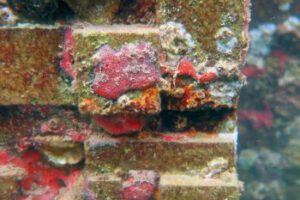

Before and after image: 1-year post-deployment
For example, in 2014 ECOncrete, in collaboration with The Herzliya Municipal Tourism Development Corporation, deployed a first of its kind seawall, promoting marine life. Marina Herzliya is the largest and one of the most innovative Marinas in the Eastern Mediterranean Sea. As the first marina in Israel to receive the world-renowned eco-label “Blue Flag”, Marina Herzliya put a considerable emphasis on sustainability and elevating ecosystem functionality. ECOncrete® has developed a science-based seawall element with high surface complexity, including holes and crevices for fish, crabs, and shrimps. It is built of high performance, marine grade, bio-enhancing concrete that provides suitable biological and environmental conditions for the development of a rich and diverse assemblage of marine flora and fauna.
Monitoring was performed with a comparison between the ECOncrete’s seawall units and standard Portland cement. 22 Months post-deployment ECOncrete’s seawall units were covered with a variety of invertebrates, while the control concrete seawall presented the low-diversity assemblage. Moreover, the majority of the dominant organism on ECOncrete’s units were structurally beneficial species that contribute to the structural stability and lifespan of the seawall units through bio-protection. The improved design of the seawall also has impacts like: lowering the ration between invasive and native species, water quality, lower ecological footprint and more. The bio-enhancement also provides socio-economic benefits: reduced maintenance costs, improved ecological stability and a higher ROI.
Marina Herzliya Case Study: https://p135776-100-25062.s100.upress.link/seawall-units-herzliya-marina/
Blue is the New Green: A message to decision-makers
The negative consequences of coastal development on marine life must be carefully considered by coastal managers and decision-makers when developing coastal shoreline protection schemes. Instead of merely asking developers to assess their negative impacts (typically termed EIS – Environmental Impact Statements), regulation should incentivize minimizing and offsetting negative impacts through implementation of innovative environmentally sensitive technologies. Bio-enhanced seawalls can protect our coastal cities, reduce erosion, and enhance the ecosystem and increase local biodiversity. Projects can benefit from expedited permitting and reduced environmental permitting, overall providing a win-win solution.
